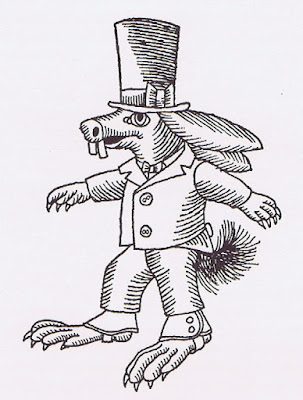A plurale tantum is a word that, grammatically, appears only in the plural form and never (or, if you’re being less precise in the definition, very seldom) in the singular. (Plurale tantum is Latin for “plural only” and its plural is pluralia tantum.) In English, pluralia tantum are often things that occur only in sets, such as eyeglasses, or things that are always a collective, such as suds. Still, there really isn’t any logical reason why the grammar should have to work this way. For example, you could certainly say to the person washing dishes, “Oh, you got a sud on your nose!” Logically this makes perfect sense, but in English it is perceived as being a humorous “error” for effect. (See a previous post on similar linguistic humor a lá P.G. Wodehouse.)
You can give thanks, or say “You have my thanks,” but you cannot give a single thank, even though clearly it is possible to thank someone a single time. Or take riches. You cannot have a single rich. On the other hand, you can have wealth in singular only, and not many wealths. (A word that can be grammatically single only, usually a mass noun, is a singulare tantum.) There’s clearly no logic there. Besides, different languages choose different words to treat this way, proving that there’s nothing intrinsic or inevitable about English’s selection.
Other examples of pluralia tantum include alms, blues, clothes, electronics, feces, graffiti, heebie-jeebies, heroics, hysterics, knickers, kudos, news, odds, outskirts, remains, spaghetti, surroundings, and tenterhooks. To test them out, try “Mary has lots of electronics, but Joe has only one electronic,” or “Can you believe he came to the door wearing only a clothe?” or “They lived on the northern outskirt of town,” or “Billie sang the blues, but Ethel sang only a blue or two before she quit.”
Words that are pluralia tantum in normal conversation but which can have exceptions include trousers, pants, jeans, pajamas, and scissors. I have seen stores advertising
 “The perfect trouser for spring,” which always looks stupid and pretentious to me, but clearly works in the fashion industry. And I would never refer to a single scissor, but I have seen it done, alas. Amazon, for example, will sell you an 8-inch Scotch Precision Scissor.
“The perfect trouser for spring,” which always looks stupid and pretentious to me, but clearly works in the fashion industry. And I would never refer to a single scissor, but I have seen it done, alas. Amazon, for example, will sell you an 8-inch Scotch Precision Scissor.
 “The perfect trouser for spring,” which always looks stupid and pretentious to me, but clearly works in the fashion industry. And I would never refer to a single scissor, but I have seen it done, alas. Amazon, for example, will sell you an 8-inch Scotch Precision Scissor.
“The perfect trouser for spring,” which always looks stupid and pretentious to me, but clearly works in the fashion industry. And I would never refer to a single scissor, but I have seen it done, alas. Amazon, for example, will sell you an 8-inch Scotch Precision Scissor.
There are also plenty of words that are pluralia tantum in one definition, but normal in another. Glasses is a case in point. You can have one glass, but never for your eyesight. Likewise, you can witness a single spectacle, but again, never for your eyesight. You can have brains, but if you have a single brain, well… duh.
Reggie says, “Igor sure has a lot of brains!”
“Smart, is he?” asks Gladys.
“No, I mean in jars. Shelves and shelves of them.” And this is why it’s important to know your pluralia tantum.
[Pictures: Rub-a-dub-dub, rubber block print by AEGN, 2002;
Princess Zita, linocut by Julia Forsyth, 2017 (Image from JuliaForsythArt on Flickr).]


















